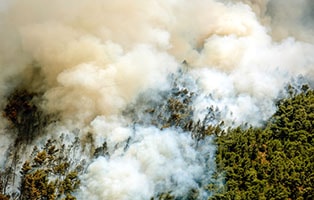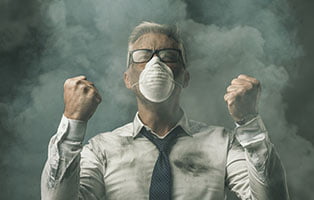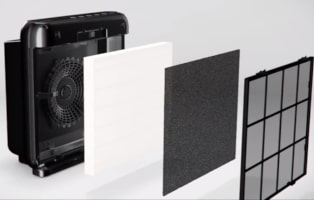Wildfire smoke is full of airborne pathogens. Read our article on how to protect yourself from harmful wildfire smoke, so you can stay safe!
Today, all over the planet, wildfires are raging.
These fires engulf everything unlucky enough to stand in their way, like out-of-control beasts with an insatiable hunger. They unleash devastating destruction on homes, wildlife, and national parks in places from one end of the globe to another.

The result of these massive infernos is countless metric tons of airborne pathogens get spewed into the atmosphere. All the deadly smoke spawned by the runaway fires significantly adds to the earth’s already overabundant pollution.
The smoke from the US wildfires has reached Europe.
Although all this is tragic in and of itself, there’s a byproduct that these all-consuming flames produce that gets scant attention. And that’s the noxious smoke full of cancer-causing pollutants, synthetic materials from houses burned to the ground, and other toxic substances.
This smoke is so dangerous that it can even harm people hundreds of miles away from the fire.
The smoke from fires keeps spiraling upwards until it gets assimilated by the fast-moving jet stream 20,000 feet above the earth. Then, prevailing winds absorb it and carry it all the way from places like Bidwell Bar Bridge in Lake Oroville, Oregon, to Milligan, Nebraska.

If you don’t take precautions, you could breathe it all in, where it can do tremendous harm to your heart, lungs, and other vital organs. Free-floating particulate matter can cause illnesses such as asthma, heart attacks, strokes, and bronchitis.
The most vulnerable to wildfire smoke are young children, pregnant women, and the elderly. Wildfire smoke can cause so much damage to babies’ lungs that they might never recover from it. People diagnosed with COVID-19 are particularly susceptible to its harmful effects.
Years of research have shown that higher than average air pollution rates can have adverse long-term effects, like compromised immune systems.
If you live in an area affected by wildfire smoke, it’s crucial to find ways to negate its effects. Even if there’s no way you can move to a less fire-prone area, there are still things you can do:
1. Check the AQI (Air Quality Index)
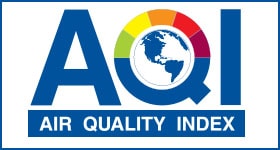
One way to do this is by looking at the air quality index (AQI) for your area. Government agencies use this index to let citizens know just how contaminated the air is.
The higher the AQI, the more dangerous it is to breathe the air.
You can also check out the air quality for your area on AirNow.gov.
2. Wear A Mask
At times, you might find yourself having to brave the unclean air produced by wildfires. For example, maybe it’s time to pick up your child from school, or you need to grab up a few groceries from your local supermarket.
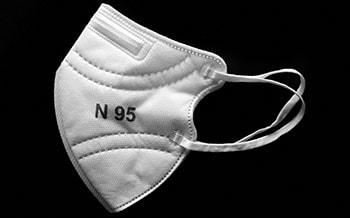
You can safeguard yourself from the toxic effect of wildfire smoke by wearing a mask.
Masks people are wearing during the current pandemic, such as bandanas or simple cloth masks, won’t filter out dangerous wildfire particles. Paper masks like you’d get at the hardware store only trap large particles, like sawdust.
To get the best protection from pollutants created by wildfires, you’ll need respirator masks—either N95 or N100. The number is the percentage of particulate matter they block.
Get one with the words “NIOSH” printed on it. This means it has been tested and approved by the National Institute of Occupational Safety and Health.
Make sure it fits snugly, but not too tight.
3. Keep Windows Tightly Shut
You shouldn’t open any windows in your home unless outdoor pollution is within acceptable levels. However, you should go one step further by taping your windows shut either with sealing or masking tape.
4. Take A Break from Vacuuming
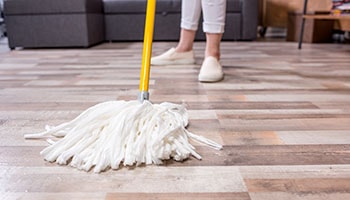
Particulate matter produced by raging wildfires eventually settles down on the floor. Even though you won’t be able to see these particles with the naked eye, they’ll be waiting there until disturbed by an external force.
Often, that comes in the form of a vacuum cleaner. Using one has the effect of recirculating the pathogens in the closed ecosystem of your home. That’s why when there’s wildfire smoke in your vicinity, you should stop using the vacuum cleaner and use a mop instead.
5. Down All Surfaces
The floor isn’t the only place particulate matter ends up. It can also adhere to other flat surfaces in your house.
It’s crucial to regularly wipe down these surfaces so that these potentially harmful particles don’t get kicked back up into the air.
6. Create a Clean Room
When your area’s air quality is poor because of an out of control wildfire, government officials might tell you to stay indoors and go to your cleanroom.
If you stay inside with the windows and doors closed, you’ll reduce indoor pollutant levels by up to 50%.

Having a clean room under such circumstances will ensure you don’t breathe in any toxic smoke. However, once you go there, you should monitor the news reports if conditions change, and you must evacuate. It’s crucial for those with serious illnesses or the very young to get to a clean room ASAP.
If there’s no way to stay cool in your house or you’re more sensitive than most to the dangers of smoke inhalation, you should seek shelter elsewhere. That could be with family or friends, or large enclosed spaces like a shopping mall with air conditioning and good filtration.
To set up a clean room at home, you’ll need to first choose a room. It should be big enough to fit in your entire family, and comfortable enough that you could spend long periods there. An excellent choice is a bedroom connected to a bathroom. Keep the heat out of this enclosed space by running an air conditioner or fan.
If you’re going to be using an air conditioner, make sure you have the fresh air option turned off. Refrain from engaging in all activities that generate smoke and other noxious particulate matter, such as:
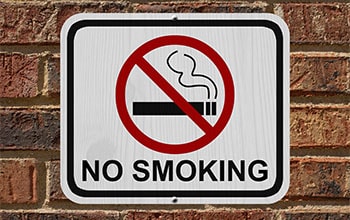
- Smoking cigarettes
- Burning incense or candles
- Cooking food
- Using wood-burning stoves
- Vacuuming (unless your machine has a HEPA filter)
- Using aerosol cleaning products
Lastly, shut off any fans that vent to the outdoors, like kitchen and ceiling fans. Close off your chimney flue and seal chimney openings with painters’ tape and plastic.
7. Get an Air Purifier
One of the best ways to counteract the effects of wildfire smoke is by using an air purifier.

Put your air purifier in the room where you spend the most amount of time.
MERV Rating
Make sure your air purifier has a high MERV rating.
MERV is an acronym (obviously), and stands for the minimum efficiency reporting value. This is a measure of a unit’s filtration power.
The average MERV rating is about an 8.
Air Purifiers with a HEPA Filter
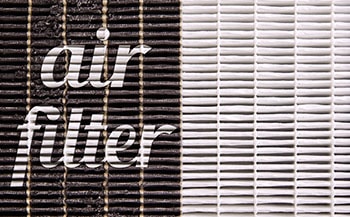
Wildfire smoke has lots of airborne particles in it, so your best bet is a machine with a HEPA (short for “high-efficiency particulate air”) filter. These units push air through a fine mesh filter, trapping all the nasty microscopic specks of soot and dust that can play havoc with your immune system.
They’re exceptionally good at sucking out particulate matter of all kinds from the air you breathe, which helps keep you and your family safe.
HEPA filters must meet rigorous testing standards and be able to extract at least 99.7% of PM0.3 (particulate matter with a diameter of 0.3 microns) the first time it goes through the filter. Particulate matter in wildfire smoke is between 0.4 and 0.7 microns in diameter. That means a filter that meets this specification will be sure to trap all the pathogens from the fires before they have a chance to get into your lungs.
Even though they don’t get rid of odors or VOCs (volatile organic compounds), they’re the best for wildfire smoke.
Activated Carbon Air Purifiers
You can also buy an activated carbon air purifier, which does just the opposite of a HEPA air purifier. By this, I mean they’re fantastic at getting rid of unpleasant odors and VOCs, but not so good at cleansing your home ecosphere of free-floating particulate matter.
Activated carbon purifiers trap gases in a bed of activated charcoal.
Ionic Air Purifiers

Ionic air purifiers use electrical charges to make particulate matter wafting through the air in your house to settle down either within the machine or on surfaces outside of it.
The disadvantage is they produce potentially toxic ozone as a byproduct.
You can deploy ozone generators in large indoor areas such as industrial warehouses. Still, they should never be used inside your residence because of the ozone.
Ultraviolet Purifiers
Ultraviolet (UV) purifiers zap pathogens in the air with powerful ultraviolet light.
They’re not good at getting rid of larger dust particles and might give off ozone.
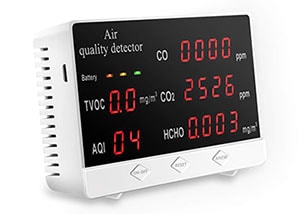
8. Buy an Air Monitor
An air monitor will continuously test your home’s air quality, ensuring that you always have an abundant supply of breathable air.
It’s a great adjunct to an air purifier because it’ll alert you when the purifier isn’t working or when the filter needs to be changed.
Final Thoughts
I hope you never suffer the ill effects of wildfire smoke. However, if you do, use the strategies in this article so you and your family can stay healthy—even during a disaster.
If you’d like more information on ways to protect yourself from wildfire smoke, go here.
If you want to know what the best HEPA air purifiers are, read this article.
Is there anything that’s not in the article that should be?
Let me know in the comments!

Air Purifier Tips & Tricks

